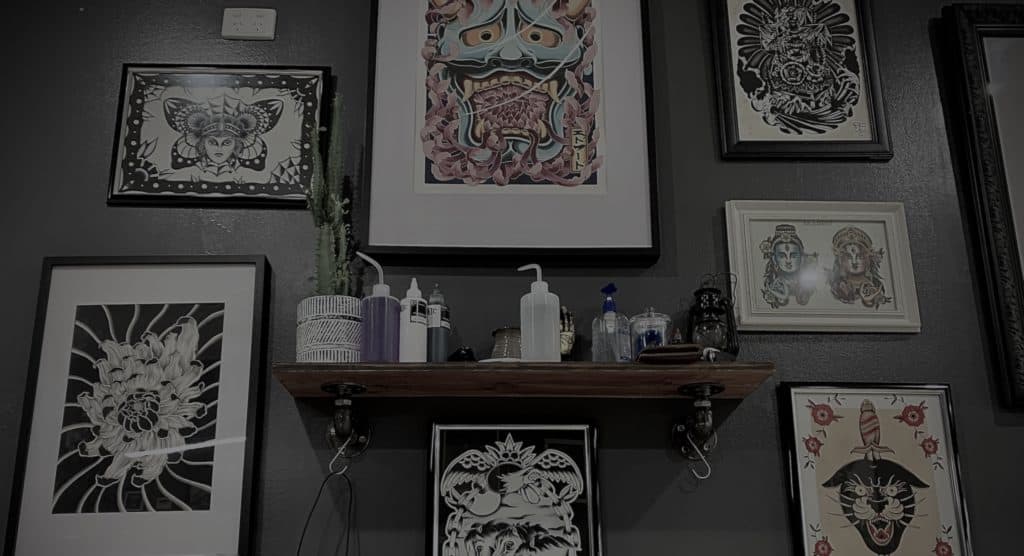Can Tattoos Cover Scars?

A common question we’re often asked is whether a tattoo can cover up a scar. Whether from injury, illness, or self-imposed, many people are looking for an effective cover-up solution that
will bring back their confidence. The short answer to this question is yes, a tattoo is an effective way to hide or reduce the appearance of scars on your skin, but the amount of coverage can
depend on a few different variables – so keep reading.
How Do Tattoos Conceal Scars?
When it’s time to tattoo over your scar, your tattoo artist will work with the line of the scar when creating a mock-up of your chosen design. Factors including the scars severity, colour, age and
location on your body will affect whether it’s possible to cover, and if so, how successful the cover-up will be.
Scar Types That Are Generally Easy to Tattoo
The following scar types are frequently tattooed over with success. However, it will still be a case-by-case basis on whether a tattoo is a viable option, which will be decided at consultations
with your tattoo artist.
● Atrophic Scars (stretch marks and acne scars)
● Self-harm Scars
● Amputation/Skin Removal Scars (while generally fairly easy to perform, tattoos on these
areas can be extremely painful).
Scar Types That Are Generally Difficult to Tattoo
You will need to talk to your tattoo artist to see whether its possible to tattoo the following kinds of tattoos as due to their shape, depth and severity results may not always be ideal.
● Keloid Scars
● Burn Scars
● Mastectomy Scars
● C-sections
Each tattoo studio will have artists with varying levels of experience with scar cover-ups, so always ask about the possibility of a scar cover-up, no matter which type you have.
How to cover a scar with a tattoo
1. Wait For Scar To Be Fully Healed
To ensure the tattoo ink properly adheres to your skin, and to prevent infection, the scar must be healed (it will have a faded, whitish colour). This may take up to two years or longer
depending on the cause and severity of the scar. If you’re not sure, speak with a dermatologist about the condition of your scar and whether it is ready to be tattooed.
2. Choose A Reputable Tattoo Artist
You should find a tattoo studio that has many good reviews and a reputation for high standards of health and safety, as well as good customer service. A tattoo artist who has experience
tattooing scars will likely produce the best results. A scar may still be visible when looking closely at the tattooed skin, however its appearance will be minimised. If done well, your old
scar will be unnoticeable to onlookers.
3. Book A Consultation
Your tattoo artist will need to see the scar and discuss your vision for your tattoos. The vast majority of tattoo artists have seen a variety of scars and skin types before, so there’s no need
to be embarrassed! A couple consultation sessions may be needed before the actual tattooing begins. Be patient as the result will be a high quality artwork and cover-up.
Final Thoughts
A tattoo can be a great, practical and fun way to regain confidence or express yourself. Be aware that scarred tissue can be more sensitive than regular skin, and therefore more painful
when tattooed. If you have any concerns or questions, don’t be afraid to ask your tattoo artist before you get started. It’s particularly important that your tattoo heals correctly, you can read
our guide on looking after a fresh tattoo for more information on this topic.
